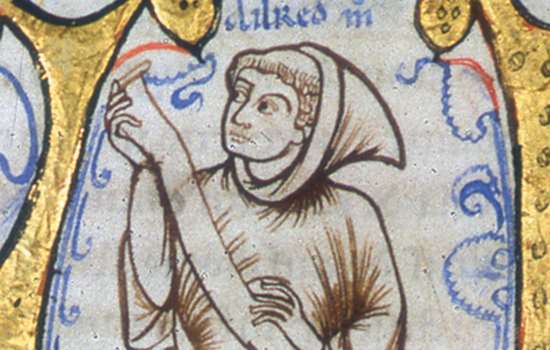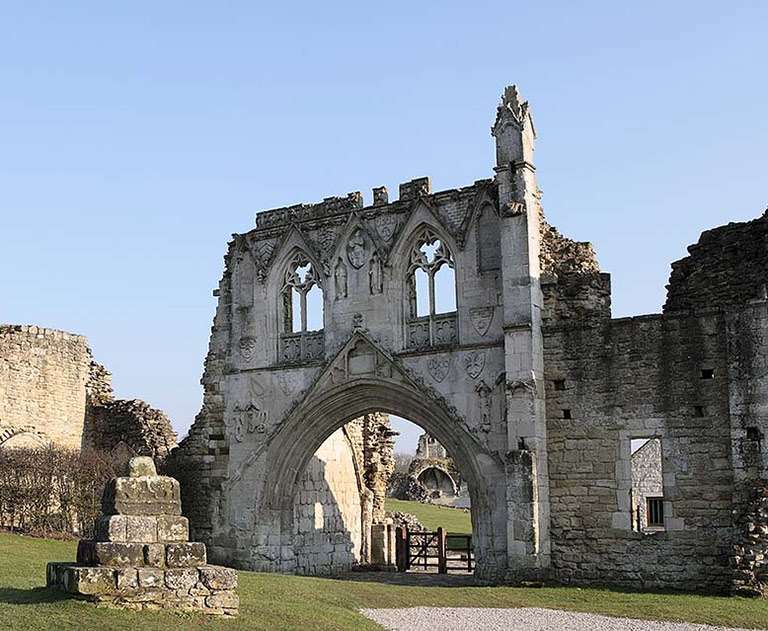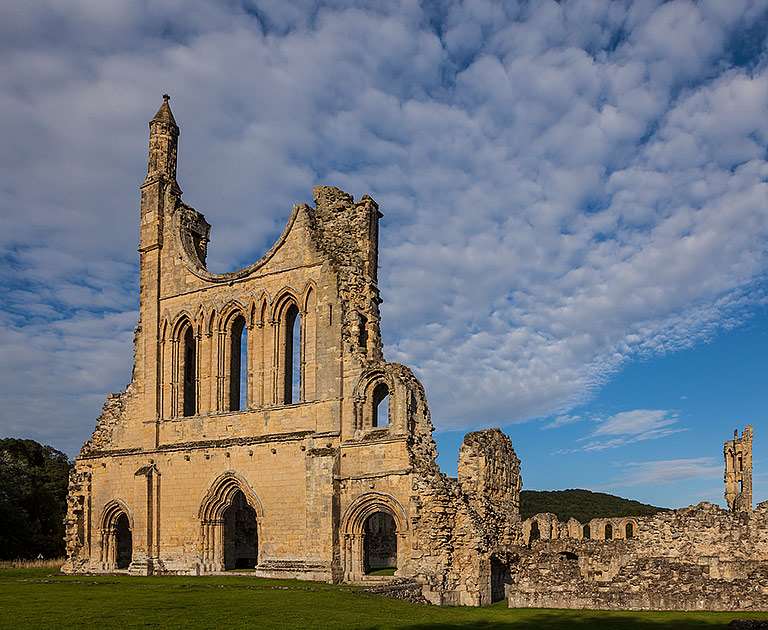Early life
Thurstan was born in the Bessin area of Normandy in about 1070. His parents were Anskar, a married priest (clerical marriage was permissible at this time), and his wife, Popelina. It is likely that the young Thurstan was educated at either the Norman cathedral city of Caen or the school of Bayeux Cathedral.
Anskar was among the churchmen who crossed from Normandy to England soon after the Norman Conquest. He joined the entourage of Bishop Maurice of London (1086–1107) and was appointed to a senior position in the clergy of St Paul’s Cathedral. Thurstan followed his father into the Church, and became a chaplain to King Henry I (reigned 1100–35). He is first mentioned in this role in 1103.
Archbishop of York
Thurstan won the king’s favour and in August 1114 Henry appointed him Archbishop of York. This was despite the fact that Thurstan was only a sub-deacon at the time and had not yet been ordained as a priest.
The Archbishop of York was one of the most important churchmen in medieval England. Not only did he rule an enormous diocese spanning Yorkshire, Nottinghamshire and much of Lancashire, but his authority as archbishop extended across the whole of northern England and, as was claimed by early archbishops of York, into Scotland.
For many years successive archbishops of York and Canterbury – the only two archbishops in England – had disputed which of them should have seniority over the other. When Thurstan refused to profess obedience to his colleague at Canterbury – and therefore to be consecrated archbishop by him, in case the issue of primacy arose – the resulting standoff dominated the first five years of his new role. He spent much of this time abroad, and it was only in October 1119 that he was consecrated as Archbishop of York by Pope Calixtus II, the ultimate authority in the western Church.
Henry I, who had forbidden him to seek consecration by the pope, was at first enraged. However, Thurstan’s diplomatic skills and connections at the French court soon proved useful: early in 1121 he was formally recalled to England.
Soon after, Thurstan finally entered his cathedral in York as its consecrated archbishop. The dispute with Canterbury, however, lingered for another six years, before an uneasy truce eventually prevailed.
Thurstan and the northern Church
As archbishop, Thurstan was an energetic reformer, and among other reforms he created two new dioceses. In 1124, he revived the ancient diocese of Galloway (Whithorn) in Scotland, an indication of the archbishop of York’s claim to authority in the Scottish Church.
Even though Thurstan had dropped his claims to authority in Scotland by 1126, relations between England and Scotland were important to the foundation of his second new diocese, this time at Carlisle in 1133. Situated in border country, Carlisle was in a region long disputed between the English and Scottish Crowns, who frequently went to war to pursue their territorial claims.
Apart from his church duties, Thurstan was also an influential political leader in the north. He enjoyed good diplomatic relations with the Scottish court. But in 1138 he rallied the northern English barons to resist an invasion by King David I of Scotland. Carrying the banner of St Peter (the patron saint of York Minster) given to them by Thurstan, they won a decisive victory over the Scots at the Battle of the Standard, near Northallerton in Yorkshire, on 22 August 1138.
Monastic reformer
As a young man, Thurstan visited the great monastery at Cluny in central France, making a vow to one day become a Cluniac monk himself. He used his tenure as archbishop to promote monasticism across northern England. Thurstan personally founded a nunnery of St Clement’s, just outside the walls of York, which was the first nunnery to be founded in the north after the Conquest. The foundation of Fountains Abbey (North Yorkshire) in late 1132 was also his work.
The archbishop also took a leading role in the foundation of numerous other monasteries, encouraging leading nobles to support them with generous gifts of land and money. His involvement is explicitly mentioned in the foundation charters of several monasteries, including Rievaulx (North Yorkshire), the first Cistercian monastery to be founded in northern England, and Gisborough Priory (North Yorkshire), an Augustinian house. Thurstan also supported the monks who went on to found Byland (North Yorkshire), another Cistercian monastery, and the Augustinian priory at Kirkham (North Yorkshire).
Hermits and holy men also found a friend and advocate in Thurstan, not least Godric of Finchale (County Durham).
Today, the remains of the monasteries that Thurstan helped to found are among the finest in Europe, and lasting testimony to the archbishop’s importance and influence.
Death and memory
On 25 January 1140 Thurstan – by then aged about 70 – resigned his archiepiscopal office. He travelled to Pontefract Priory (West Yorkshire), where in fulfilment of the vow he had made as a young man, he took the vows of a Cluniac monk. He died at Pontefract on 6 February 1140 and was buried in a place of the utmost honour, before the high altar in the priory church.
Approximately two years later, his body was exhumed and discovered to be incorrupt and sweet-smelling, qualities often associated with the relics, or physical remains, of saints. Indeed, a Life, or idealised biography of Thurstan, written at about this time refers to the ‘Blessed Thurstan’, a term used at this time to describe saints. Thurstan is described as appearing in a dream to confirm his rest ‘among the blessed’.
The archbishop lived in an age of saints. Soon after their deaths, several monks and hermits known personally to Thurstan were venerated as saints – Aelred and William of Rievaulx, Godric of Finchale and Waldef of Kirkham and Melrose. Saintly cults of this type, largely restricted to a single monastery and its immediate surroundings, did not at this time require papal approval.
Saint Thurstan
It has generally been accepted by modern scholars that Thurstan’s cult never became established. But new evidence suggests that the monks at Pontefract did indeed regard Thurstan as a saint.
The calendar of saints’ feast days in a 15th-century liturgical manuscript from Pontefract has an entry for 6 February (the anniversary of Thurstan’s death) which reads (translated from the Latin), ‘Death of St Thurstan, archbishop of York, 1140’. It is written in red ink, a colour typically associated with high status and important holy days. This is unambiguous evidence that the monks of 15th-century Pontefract regarded Thurstan as a saint.
It is possible that the monks were especially eager to sustain memory of the holy archbishop because Pontefract Priory was an important pilgrimage destination at this time. In 1327, Thomas, Earl of Lancaster, who had been executed nearby, was buried at the priory. His remains almost immediately became the focus of a popular cult: pilgrims flocked to Pontefract in search of miracles. Although Thomas’s veneration was never formally approved by the pope, he became the most important ‘political’ saint in late medieval England.
Prayers were said in Thurstan’s memory in London and his native Normandy, although there is no evidence that his saintly cult extended beyond Pontefract. However, like many of the holy abbots and hermits he supported, there can now be no doubt that Thurstan was counted among the saints, or to use the medieval term, ‘the holy company of heaven’.
By Michael Carter
Top image: Detail of the 20th-century statue of Thurstan on the choir screen at Ripon Cathedral
© Kevin George/Alamy Stock Photo
Further reading
Michael Carter, ‘The veneration of Archbishop Thurstan of York at Pontefract Priory (Yorkshire)’, The Journal of Medieval Monastic Studies, 13 (2024), 105–15 (subscription required; accessed 4 Dec 2024)
Related content
-

Aelred of Rievaulx
Read about the inspirational monastic leader who was abbot of Rievaulx Abbey from 1147 until his death in 1167.
-

ABBEYS AND PRIORIES
Learn about England’s medieval monasteries and uncover the stories of those who lived, worked and prayed in them.
-

MORE HISTORIES
Delve into our history pages to discover more about our sites, how they have changed over time, and who made them what they are today.










